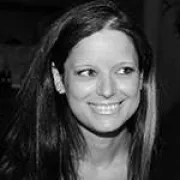Photographer and writer Buku Sarkar (@bukusarkar) grew up between Calcutta and New York. Her photographs have been featured in the NY Times, NYRB, F-Stop Magazine, and many other publications, as well as exhibited in Los Angeles, New York and Miami.
Growing between India and the USA, Sarkar didn’t need to cope with the cultural diversity. She never had to worry about “being an Indian living in New York”. [sic] “I felt no racism, no treatment of being different.”
Sarkar started using photography as an art medium back in 2015. She had been diagnosed with a chronic illness and would take pictures with her phone during her short walks around the neighborhood. Gradually, the locals started coming up to her, asking to have their portrait taken. That was when Buku got close to the “Laundry Ladies” and their daughters and decided to photograph them; that was one of her very first collective works.

Sarkar’s project A Beautiful Devastation captures the aura and sadness of Calcutta that Buku experienced upon her return to her homeland. She’d left India at 17, only to escape what she felt was a life full of restrictions. New York was a new thing, a ticket to freedom and independency. “[sic] I liked that I could date a pizza delivery boy and that was accepted. I liked that I could walk the streets at 3 am. I never saw that kind of equality in India and I think that freedom is what drew me to New York.”
She returned to India 20 years later and started photographing the city for her book Photowali Didi. It was her way of getting reacquainted with the city she’d been estranged from. “I always knew I wanted to call it A Beautiful Devastation. It’s a city that I’ve seen go from being in the Top Four in the country, to possibly not even in the Top Fifteen now.”[sic] Sarkar admits that watching Calcutta stagnate while the rest of India sprints forwards is really sad. “The beauty of the city, the crumbling history, along with this tragedy, made me think of this title.”

It wasn’t easy realizing this project; Sarkar came face to face with both practical and emotional challenges. “I can’t walk properly, so yes, lots of difficulties. Getting onto a tram, sometimes shooting from cars; I have a local rickshaw wala who I call when I can’t walk and tell him to take me anywhere and we ride for a few hours, drinking lots of tea in between.” The emotional toll of going around the city was also heavy for the published photographer. “There’s a deep, deep sadness buried in the nooks and crannies of Calcutta’s crumbling façade. It’s a beautiful sort of sadness, though. Not the empty kind. The kind that fills and overwhelms you.”
© Buku Sarkar
Calcutta’s distinct aura is successfully depicted in Sarkar’s photographs – a series of photographs that also portray how the locals are taking their city’s decay lying down. Upon asking Buku about her favorite picture from the project, she said it’s the black and white picture of the man riding his bicycle along Chitpur Road. “I’m not sure why, I can’t explain why. I like something, it’s just a feeling in your gut.”
I’m still trying to figure out what photography is to me. So far, it’s been the same as in writing stories; a way to discover something new – both outside and within you – to understand and reconcile with things.














